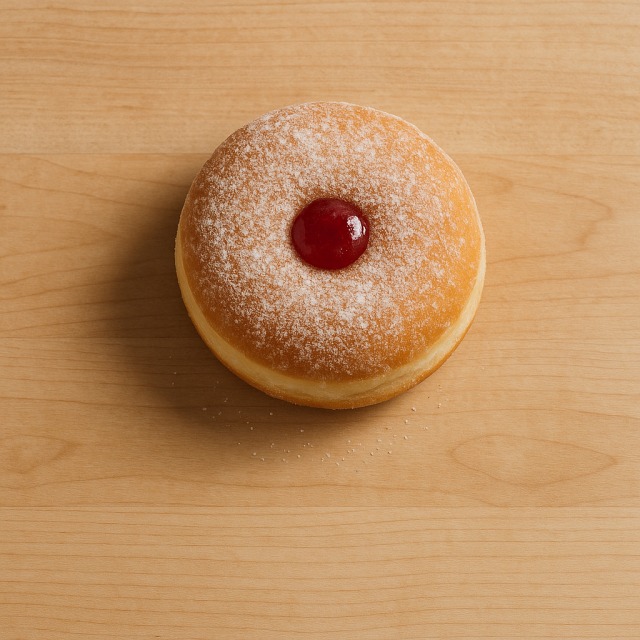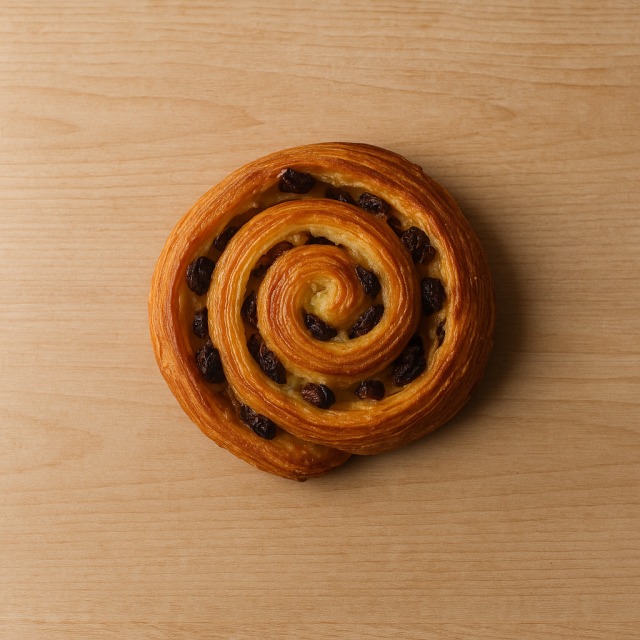Calorie Chart / Breakfast, Snacks / Chocolate croissant
How Many Calories Are in Chocolate croissant?
Calculation of the nutritional value & Recommended Dietary Intake of chocolate croissant
For g and a calorie requirement of kcal
| Calories 286 kcal | Proteins 4.9 g | Lipids 14 g | Carbohydrates 35 g |
| 14% | 7% | 21% | 13% |
Health benefits of chocolate croissant

Chocolate croissant - 100g
Calories 408 kcal
Proteins 7 g
Lipids 20 g
Carbohydrates 50 g
The chocolate croissant is considered a high-calorie viennoiserie because of its flaky butter dough and chocolate filling. Those calories mainly come from lipids (butter) and carbohydrates (flour and sugar). Beyond calories, it still supplies small amounts of B-group vitamins (B1, B2, B3) from enriched wheat flour and traces of iron and magnesium thanks to the chocolate. Cocoa also delivers polyphenols, whose antioxidant properties are supposed to support cardiovascular health, although the benefit is limited by the product's overall calorie and sugar content.
Invented in France in the 19th century as a variation on the Austrian kipferl, the chocolate croissant—locally called "pain au chocolat"—quickly became a breakfast staple. Because of its generous calorie load, one unit can cover 15–20% of a sedentary adult's daily energy requirement. Knowing its calorie density helps athletes plan a quick pre-workout boost, while weight-watchers will note that its calories are markedly higher than those of a plain croissant or a simple piece of apple.
Tips for incorporating chocolate croissant into a balanced diet
If you want to enjoy a chocolate croissant without letting calories derail your balanced diet, think portion and pairing. Limit yourself to one pastry and combine it with a protein-rich side such as a pot of yogurt or a slice of ham hock; the extra proteins increase satiety and help offset the high calorie intake. Adding a fresh fruit like a banana or an orange introduces fiber and vitamins without too many additional calories.
For brunch, cut the chocolate croissant into cubes and serve it in a "pain perdu"-style baked pudding with beaten egg, semi-skimmed milk, and berries—baking instead of pan-frying avoids extra calories. Alternatively, split the pastry open and fill it with fresh strawberry slices for a lighter twist. Remember to budget the remaining meals of the day: choose a grilled chicken breast with broccoli rather than fries to balance the morning calorie load. Counting calories does not mean banning pleasure; it means making conscious swaps so that total daily calories stay within your goal.
Frequently Asked Questions
- How many calories are in a chocolate croissant?
- There are 408 kcal per 100 g.
- Does a single pastry have more calories than a plain croissant?
- Yes. A standard 60 g chocolate croissant delivers around 245–260 kcal, whereas an equally sized plain croissant averages 200 kcal, so you add roughly 40–60 kcal.
- Are the calories mostly from sugar or fat?
- The calories are split between fat (butter) and sugar-rich carbohydrates; fat provides slightly more than half of the calories.
- Can I burn those calories with a 30-minute jog?
- An average 70 kg person burns about 300 kcal during a brisk 30-minute run, which nearly offsets the calories of one pastry.
- Is it OK to eat a chocolate croissant when dieting?
- Yes, if you track your calories carefully and adjust other meals—opt for lean proteins and vegetables later in the day to keep total calories within your target.
Similar foods
Information provided by Calorie Menu may contain inaccuracies or errors. It cannot, under any circumstances, substitute medical advice or medication.










